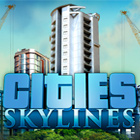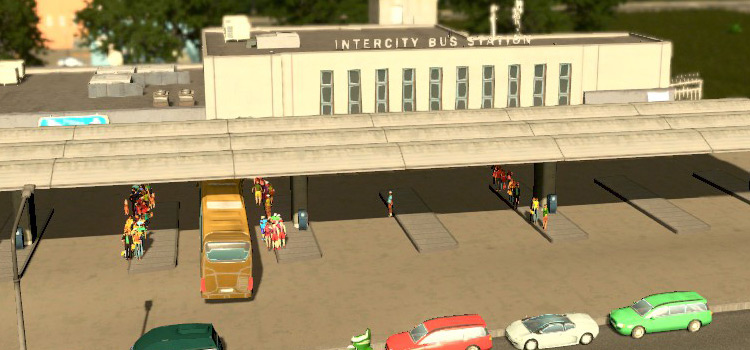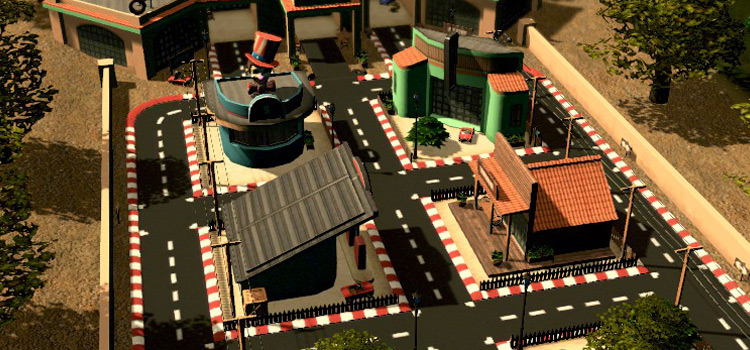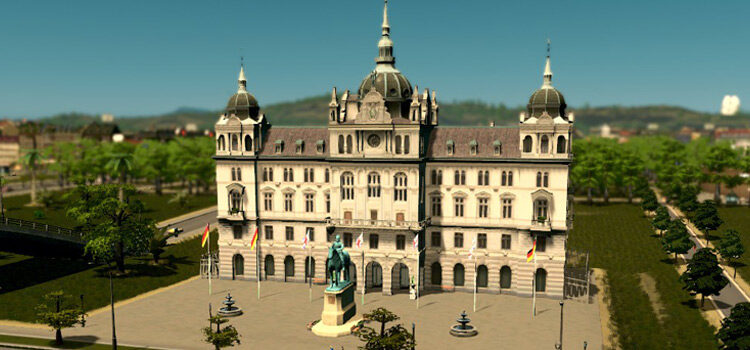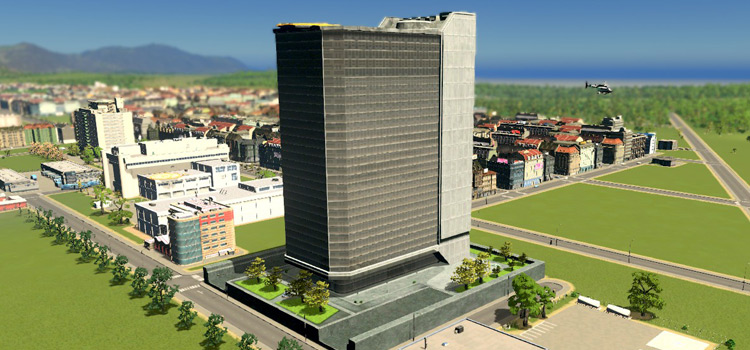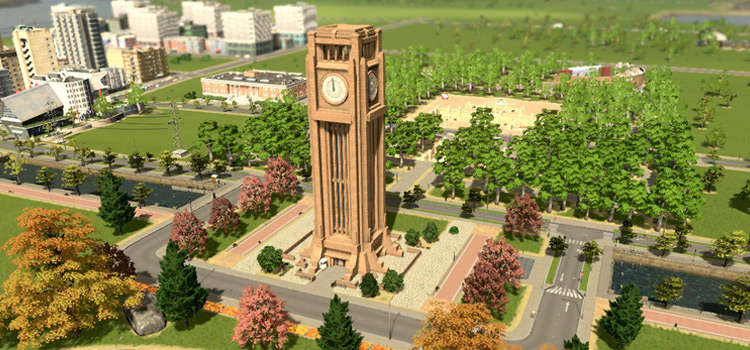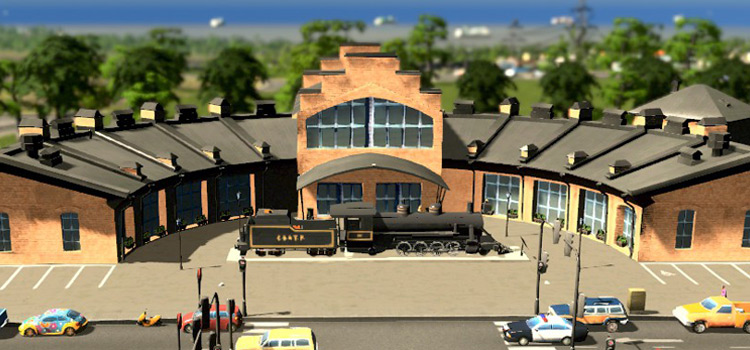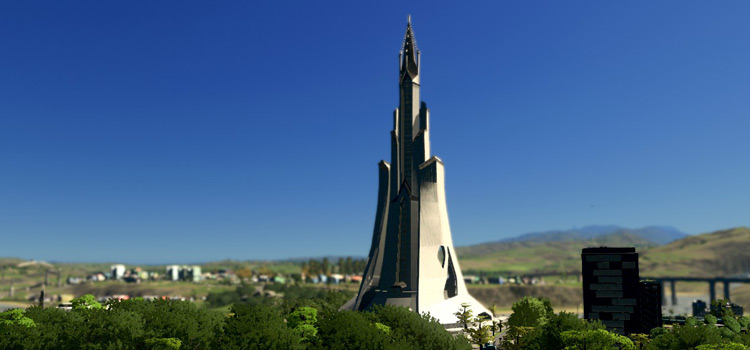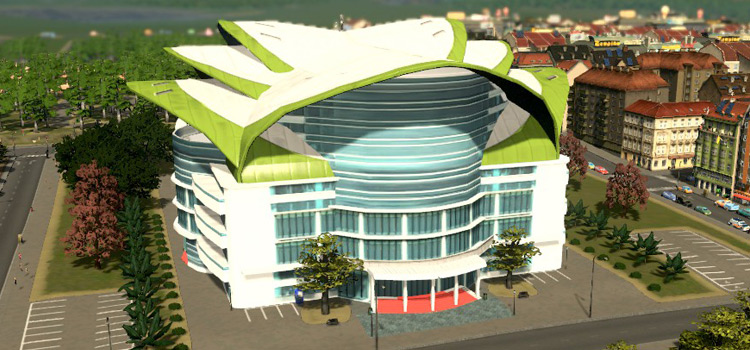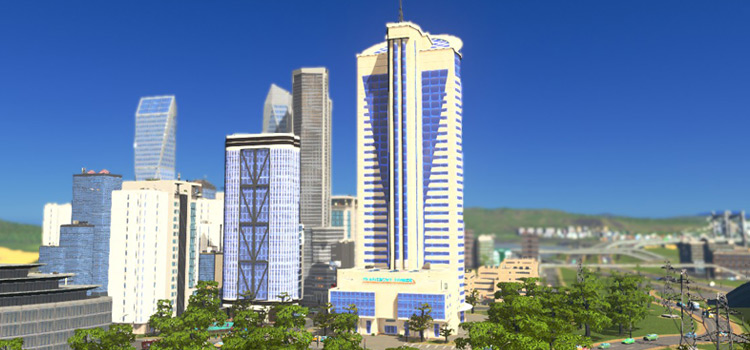
| Transport Tower | |
|---|---|
| Cost to Build | ₡60,000 |
| Upkeep | ₡960/week |
| Tourism Value | 100 |
| Entertainment Value | 50 |
| Noise Pollution | 25 |
The Transport Tower is a level 2 unique building in Cities: Skylines. To unlock it, you’ll need to reach 1,000 weekly public transport passengers in any one of your games.
Note: Once unlocked in any playthrough, unique buildings stay unlocked even for new games, unless you choose ‘Reset Unique Building Unlock’ in your game options.
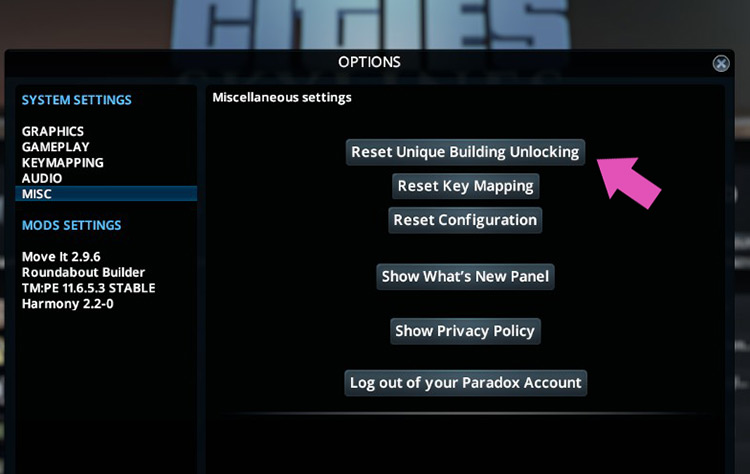
We’ll take you through the basics of setting up your public transport, and give you some tips on optimizing them to get more passengers.
Basic Requirements
To build the transport tower, you’ll need to have reached at least the ‘Boom Town’ milestone, which can be anywhere from 650-2,600 population depending on the map.
The Unique Buildings menu is unlocked at ‘Worthy Village’, and level 2 unique buildings are unlocked at ‘Tiny Town’.
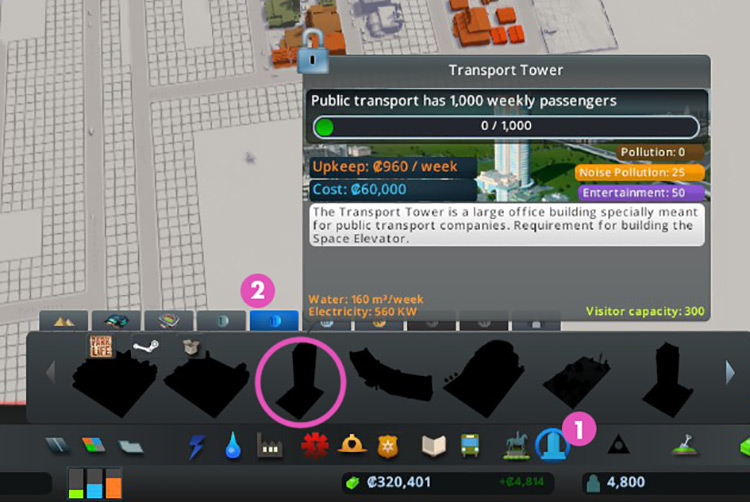
However, you’ll need public transport to unlock the Transport Tower. And buses — the earliest available mass transit option — need the ‘Boom Town’ milestone.
The metro, which tends to attract more passengers and is therefore an easier way to get to 1,000, is unlocked at ‘Big Town’.
And since only a portion of your population will use public transport, expect to be at around 10,000 residents before you get your Transport Tower.
Setting Up Bus Lines
In order to get buses, you’ll need to build either a bus depot (₡30,000) or a biofuel bus depot (₡40,000).
They’re functionally the same, except biofuel buses are quieter.
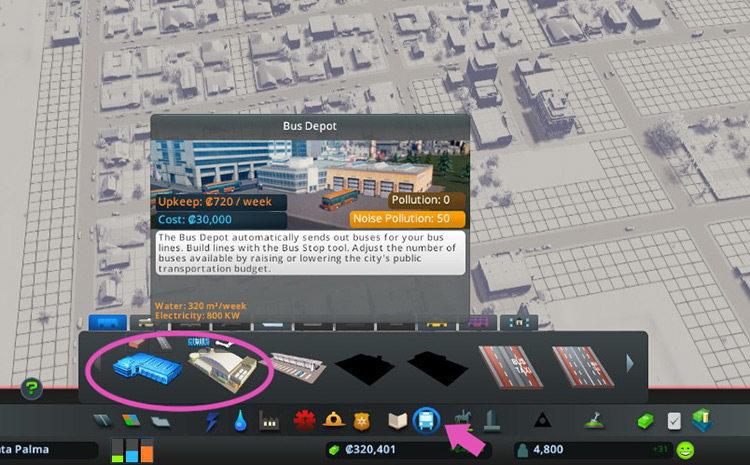
Once you’ve built a depot, create routes by placing bus stops all around your city.
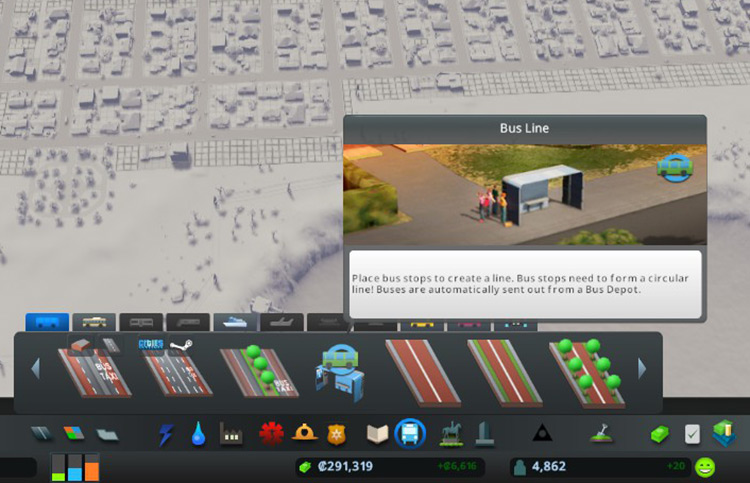
In order to work, each route needs to loop back to its first stop. Don’t forget to finish the loop by clicking ‘Complete Line’ after placing bus stops along the different streets.
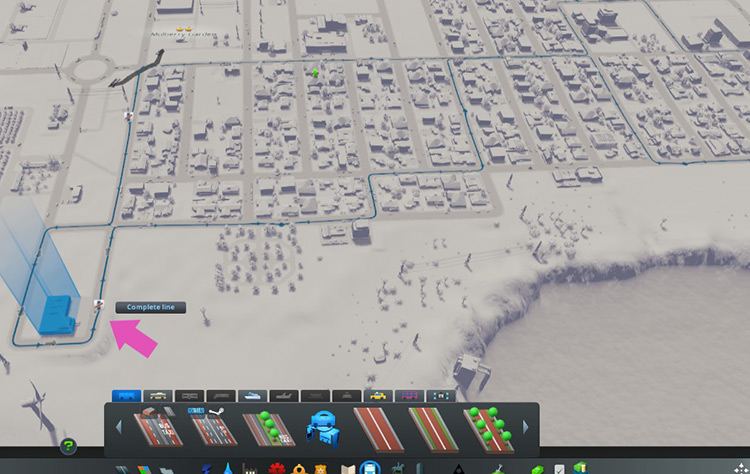
Setting Up A Metro System
The metro is a much easier way to provide transport to lots of passengers since they won’t add to your road traffic like buses do. They also cover distances a lot faster, making your citizens much more likely to go for them.
To set up your metro system, you’ll first need to build metro stations at different locations in your city, then connect them using tracks.
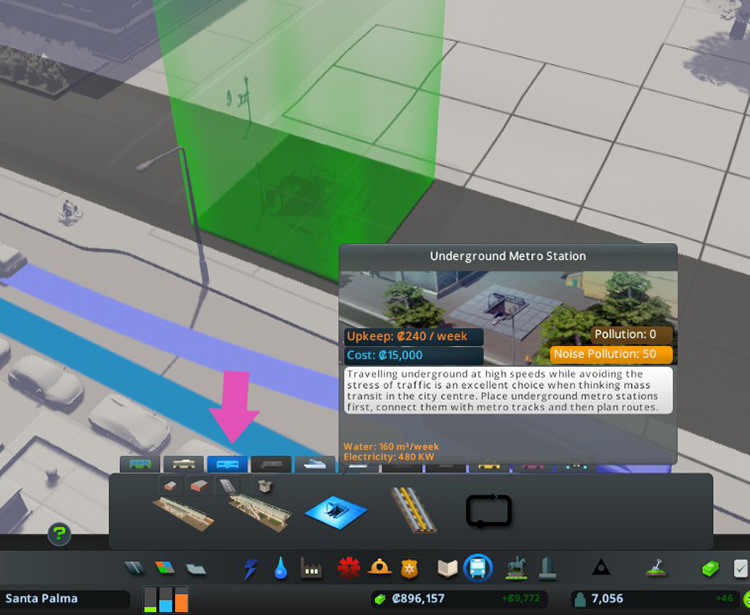
Next, connect the stations using metro tracks.
You can choose to have your metro system above-ground, underground, elevated, or a mix of the three.
Generally, underground metros are far easier to work with since you don’t have to worry about the tracks having to find space around roads or buildings.
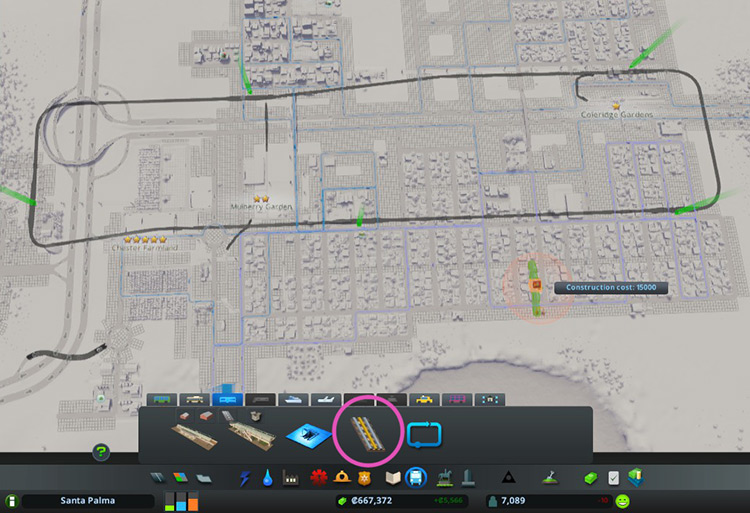
Now that you’ve got your metro stations and tracks laid out, assign your metro lines using the metro line tool.
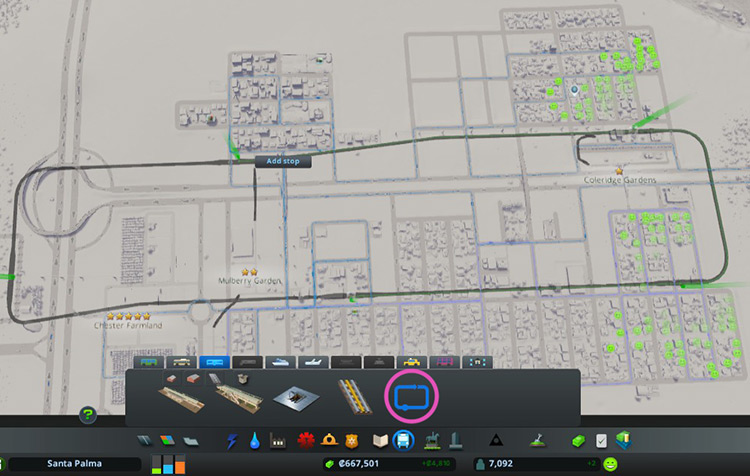
Tips for Getting More Public Transport Passengers
Once you’ve got your public transit in place, it’s just a matter of waiting until you get up to 1,000 passengers.
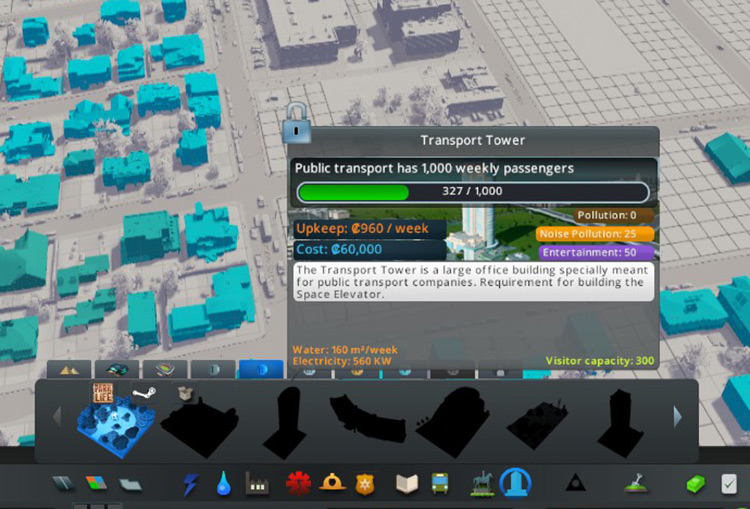
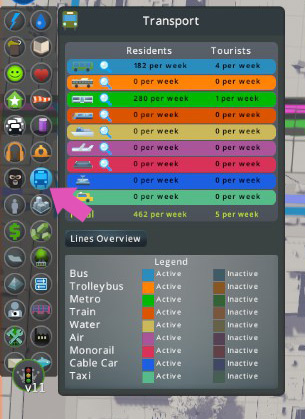
If you’ve got the basics of creating public transport services down, but are struggling to get your residents to take them, here are a few tips for optimizing.
Tip #1: Make Public Transport Free
You can encourage more people to use your buses and metros by making it free of charge through a policy.
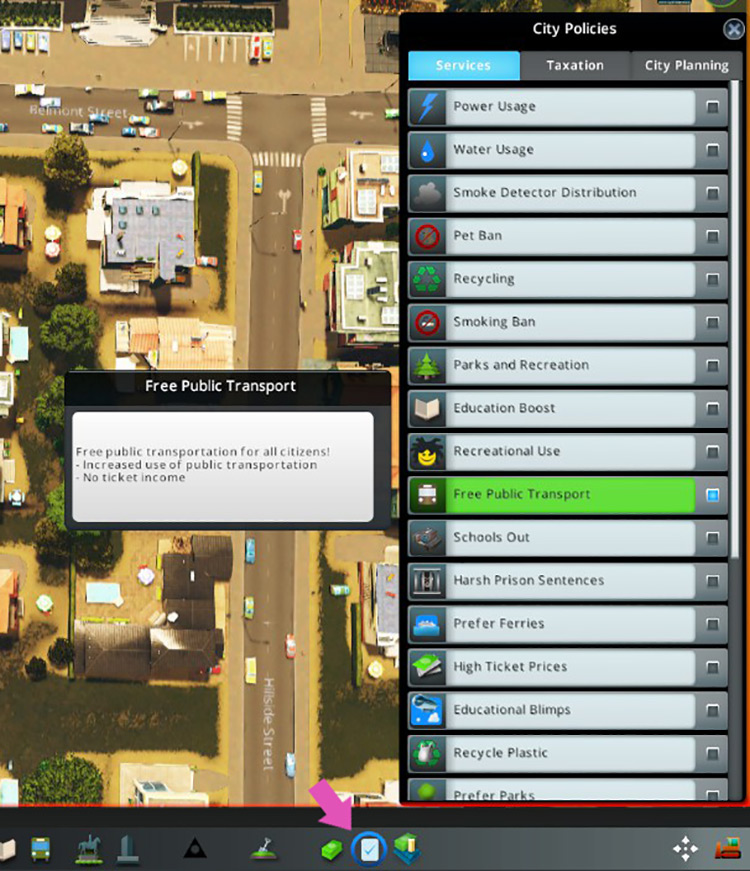
Tip #2: Place Bus Stops and/or Metro Stations at Popular Destinations
Provide public transport stops near popular locations such as education facilities, parks, and attractions or unique buildings.
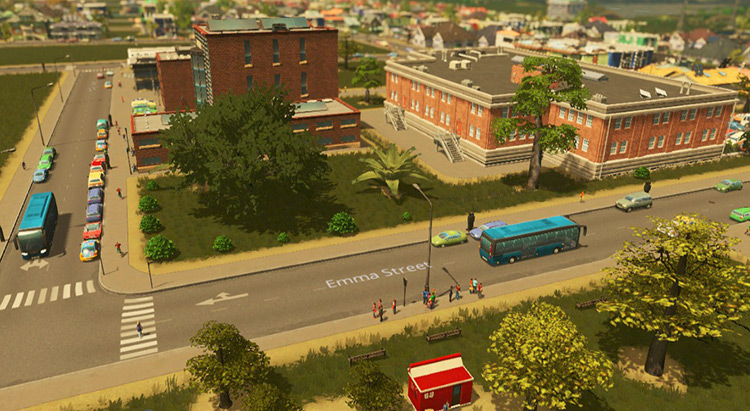
Tip #3: Provide Transport to Industry Areas
A big portion of your commuter numbers will be people going to and from work.
Provide bus or metro lines that connect residential zones to industrial and commercial zones.
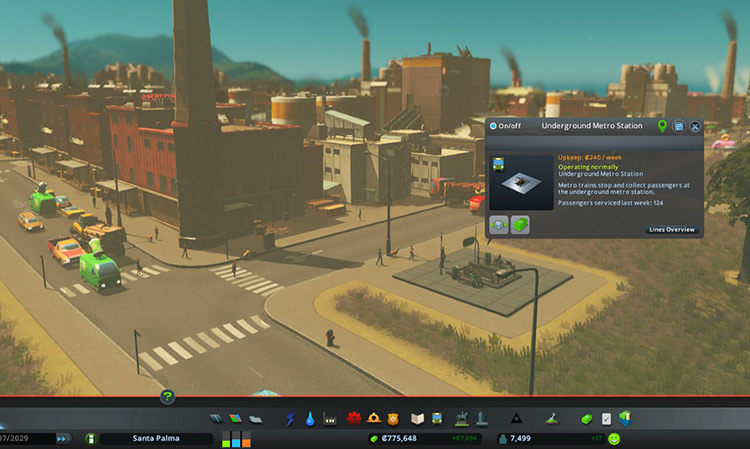
Tip #4: Create a Metro Loop Line
A good option for designing your metro is to build the tracks as a loop that covers different parts of town, then assign one line going clockwise and another going counter-clockwise.
This way your citizens are more likely to find a quick metro ride to their destination.
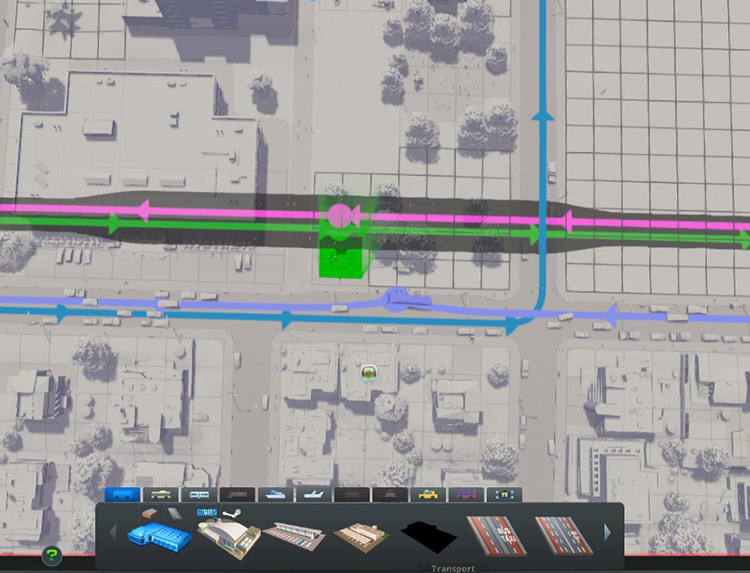
Tip #5: Facilitate Transfer Between Buses & Metros
An efficient way to use public transport is to have your buses collect people from local streets then have a bus stop near a metro station.
They can then hop off the bus, and transfer to the metro to go to places farther across town.
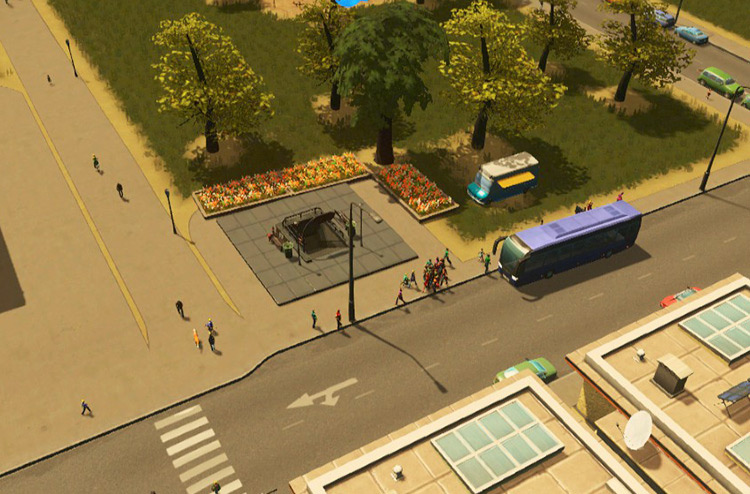
Tip #6: Create Pedestrian Paths Leading To Bus Stops & Stations
Make taking public transport even more convenient and attractive to your citizens by shortening the distance they have to walk to their stops and stations.
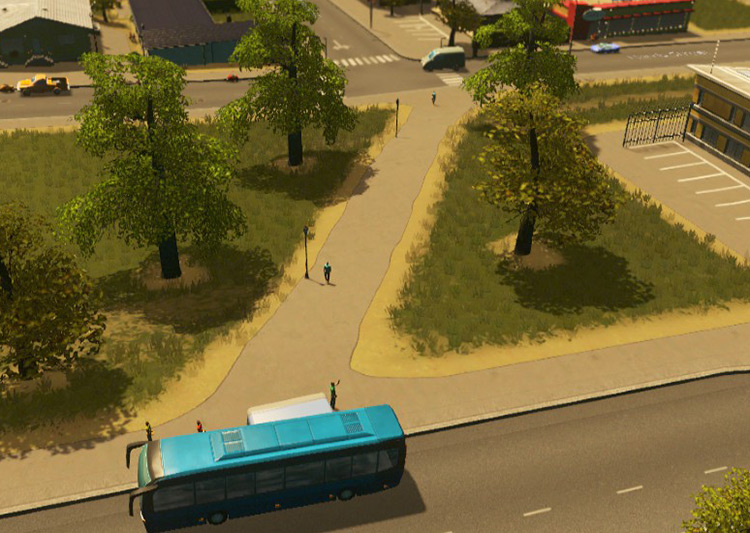
Note that even for a city with efficient public transit, only around 10-20% of the population will be using public transport.
So getting to 1,000 passengers will really just be a matter of growing your population as you normally would, while making sure your buses and metros are working as intended.
-
Cities: Skylines
- How To Unlock the Transport Tower in Cities: Skylines

